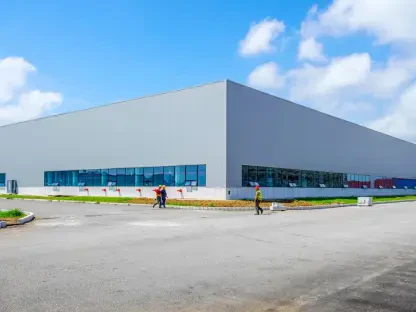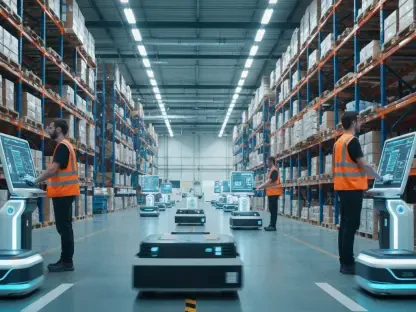In a world where supply chain efficiency is paramount, businesses are increasingly turning to innovative solutions to meet growing logistic demands. The transformation of logistics operations through automated warehouse management systems stands as a testament to this paradigm shift in industries committed to enhancing operational efficiencies.
Automated warehouse management represents a groundbreaking evolution in logistics. Its integration into supply chains has revolutionized the way businesses handle storage, retrieval, and distribution, offering unprecedented efficiency and precision. These systems are designed to streamline warehouse processes, leading to enhanced productivity and reduced errors in operations. Notably, companies such as Schlüter-Systems KG have leveraged these technologies to optimize their extensive facilities, which include expansive, multi-level complexes.
Features and Components of Automated Warehouse Management
Automated Storage and Retrieval Systems (AS/RS)
Automated Storage and Retrieval Systems are central to the function of an automated warehouse management system. These systems efficiently handle the storage and retrieval of goods, optimizing space utilization and reducing error margins. By automating the process, companies not only increase the speed and accuracy of operations but also minimize labor costs associated with traditional methods. Additionally, AS/RS integrates seamlessly into broader warehouse management architectures, enhancing overall warehouse coordination.
Robotics and Autonomous Vehicles
Robotics and autonomous vehicles play a pivotal role in automated warehouse management by facilitating the movement of goods. These technologies support tasks like picking, packing, and transporting products across different warehouse zones, significantly reducing the manual labor required. The inclusion of autonomous vehicles in warehouses helps further improve flexibility and responsiveness to dynamic market demands, providing businesses with a competitive edge.
Recent Developments and Industry Trends
In recent years, there has been a surge in digital transformations within warehouse management systems. Companies are integrating more advanced technologies such as AI-based decision-making tools and IoT-enabled devices for smarter warehouse operations. This transformation is driven by the need for greater transparency, data analytics capabilities, and real-time monitoring. Additionally, the push toward greener operations is gaining momentum, encouraging businesses to adopt more sustainable practices within automated systems.
Real-World Applications and Use Cases
Automated warehouse management has found applications in a variety of industries, from manufacturing to retail. In the case of Schlüter-Systems KG, the implementation of a comprehensive warehouse management system has improved logistics management, addressing the challenges of international distribution. The use of self-driving monorail systems and driverless transport systems illustrates the potential for increased automation in warehouse operations, leading to better coordination and reduced operational complexity.
Challenges and Limitations
Despite the advantages, automated warehouse management systems face certain challenges. Technical issues such as system integration, along with regulatory concerns, can hinder seamless operation. Furthermore, the high upfront costs involved in implementing such advanced systems may limit accessibility for smaller enterprises. There are ongoing efforts to address these limitations, including developing modular solutions that allow for scalability and customization to meet specific business needs.
Future Outlook and Potential Growth
The future of automated warehouse management looks promising, with continuous improvements expected in automation technologies. Emphasis on integration with emerging technologies like blockchain and enhanced data analytics tools could further transform the industry. As businesses continue to adapt to changing demands, these systems are poised to become standard practice in warehouse operations, reshaping the landscape of logistics and supply chain management.
In conclusion, automated warehouse management has set a new benchmark for efficiency and precision in logistics. The successful adoption by companies like Schlüter-Systems KG exemplifies its transformative potential. While challenges such as integration complexities and high initial costs exist, ongoing developments are paving the way for more accessible and robust solutions. The anticipated advancements in technology suggest a promising horizon for increased automated logistics solutions, ultimately driving industries toward enhanced productivity and sustainability.









